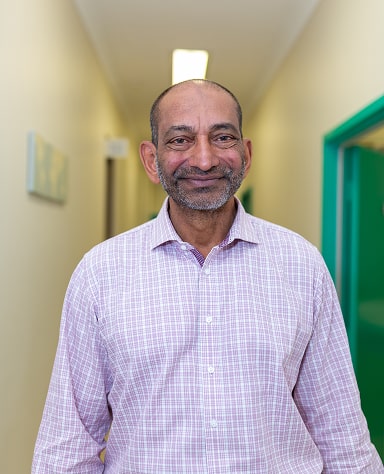Table of Contents
A no-scalpel vasectomy is a common choice for male sterilisation due to its minimally invasive nature and reliable results. Unlike a conventional vasectomy, this method involves a single puncture rather than incisions, lowering the risk of complications. It is performed under local anaesthesia as an outpatient procedure.
Many men choose this option because it may offer a shorter recovery time and a lower risk of complications compared to traditional methods. Effective recovery after a no-scalpel vasectomy depends on proper aftercare and following medical advice.
What is a No-Scalpel Vasectomy?
A no-scalpel vasectomy is a minimally invasive procedure that significantly reduces the presence of sperm in semen, making it a highly effective contraceptive method.
The no-scalpel method requires only a small puncture in the scrotum, which may lower the risk of bleeding and infection compared to traditional techniques. The vas deferens are accessed, divided, and sealed using the fascial interposition technique. No external stitches are usually needed, and the body continues to produce sperm, which is naturally absorbed.
A semen analysis is necessary, typically after 20 ejaculations or as advised by a doctor, to confirm that no sperm remains. Until then, another form of contraception should be used.
Preparing for the Procedure
Proper preparation contributes to effective recovery after a no-scalpel vasectomy. Understanding what to expect can make the experience more manageable.
- Consultation:
An initial consultation allows patients to discuss concerns and ask questions about the procedure. This helps in making an informed decision. - Clothing:
Loose-fitting clothing and supportive underwear, such as a jockstrap, provide added comfort after the procedure. - Hygiene:
Showering before the appointment is recommended, as submerging the area in water should typically be avoided for 24 to 48 hours post-procedure or as advised by a doctor. - Transportation:
Since driving immediately after the procedure is not recommended, arranging for someone to drive home is advised. - Activity planning:
Strenuous activities should be avoided for at least a few days, though recovery times vary. Planning work and personal schedules accordingly can be helpful.
Following these steps can support a smoother recovery process, helping to minimise discomfort and reducing the risk of complications.
The Recovery Process
Recovery after a no-scalpel vasectomy is usually straightforward, with most men resuming light activities within a few days. Proper post-procedure care helps minimise discomfort and supports effective recovery. While healing times vary, most men start feeling better within a week, though some may take longer to recover.
Taking the right precautions can help improve comfort during recovery. Below are key steps to follow immediately after the procedure.
Immediate Post-Procedure Care
The first 24–48 hours are crucial for recovery. Resting and following aftercare instructions help manage swelling and discomfort.
- Rest:
Avoid unnecessary movement for at least 24 hours to allow the body to start healing. - Ice packs:
Applying a cold pack to the scrotal area for 10-15 minutes helps reduce swelling. - Supportive underwear:
Wearing a jockstrap or tight-fitting underwear provides added support and minimises movement. - Pain relief:
Nonsteroidal anti-inflammatory drugs (NSAIDs) are commonly used to manage discomfort. Patients should consult their doctor before taking any new medication. - Hygiene:
Keep the area clean and dry. Avoid bathing or swimming until advised by the doctor.
Managing Discomfort and Pain
Mild discomfort is common after a no-scalpel vasectomy, but it is usually manageable with simple measures. Proper care can prevent unnecessary irritation and help speed up healing.
- Scrotal support:
To reduce strain on the area, a jockstrap or snug underwear should be worn for several days. - Avoid strenuous activities:
Heavy lifting, cycling, and vigorous exercise should be avoided for at least a week. - Gradual movement:
Light activities like short walks can be resumed after a couple of days, but listen to your body’s signals. - Pain management:
Over-the-counter NSAIDs can be taken as needed to ease discomfort. - Resting position:
Elevating the legs while lying down helps reduce pressure on the scrotum.
Effective recovery after a no-scalpel vasectomy depends on following these simple yet essential steps. Allowing the body time to heal properly reduces the risk of complications and supports a more comfortable recovery.
Post-Procedure Care and Complications
While complications are rare, understanding how to manage the healing process and recognising potential concerns can help prevent discomfort.
Wound Care and Dressing
Keeping the procedure site clean and protected helps minimise irritation and lowers the risk of infection. Since the no-scalpel method involves a single puncture rather than stitches, healing is usually faster.
- Keep the area dry for the first 24-48 hours. Avoid submerging in water, including baths, pools, and hot tubs.
- Gently clean the site with a damp cloth when necessary, but do not scrub the area.
- Take off the dressing after 24 hours or as advised by the doctor. If needed, replace it with a clean, dry bandage.
- Wear supportive underwear to reduce movement and friction against the wound.
- Watch for signs of infection, such as increasing redness, warmth, or pus-like discharge. If symptoms worsen or fever develops, seek medical attention promptly.
Most men find the wound healing within a few days, especially when proper care is followed.
Common Complications and Risks
Although a no-scalpel vasectomy has a lower risk of complications than a conventional vasectomy, it is important to be aware of potential concerns. Early recognition of symptoms can help address issues before they become problematic.
- Mild swelling and bruising are common and usually subside within a few days with rest and cold packs.
- Bleeding or hematoma (a collection of blood under the skin) can occur but is uncommon. If significant swelling or pain develops, medical advice should be sought.
- Infection is rare but can present with fever, pus, or increasing redness at the site.
- Chronic discomfort (post-vasectomy pain syndrome) affects a small percentage of men and may require further evaluation.
- Sperm granuloma (a small lump caused by sperm leakage) can form but often subsides independently without intervention.
Most men recover without complications, but following post-procedure care recommendations can help support healing and reduce risks.
Returning to Normal Activities
Resuming normal activities should be gradual after a no-scalpel vasectomy. While many men feel well enough to move around within a day or two, allowing the body to heal properly reduces the risk of complications.
Recovery after a no-scalpel vasectomy requires avoiding strenuous tasks early on and following medical advice about returning to activities.
- Light activities:
Walking can usually be resumed after 24–48 hours, but avoid excessive movement. - Work:
Office jobs can often be resumed within a couple of days, while physically demanding jobs may require up to a week of rest. - Exercise:
Avoid heavy lifting, running, or cycling for at least one week to prevent strain on the area. - Sexual intercourse:
Many men feel comfortable resuming after a week, but recovery varies. Consulting a healthcare provider can help determine the right timing. - Pain awareness:
Any increase in discomfort or swelling after activity may indicate the need for more rest.
Gradually easing back into daily routines can help prevent discomfort. Listening to the body’s signals and avoiding overexertion will support a smoother recovery.
Follow-Up and Long-Term Care
Post-procedure follow-up appointments and long-term care play an important role in assessing the effectiveness of the vasectomy. Since sperm remains in the system for a period after the procedure, taking the necessary precautions is essential.
Follow-Up Appointments
Regular follow-ups help confirm the procedure’s success and assess healing.
- Semen analysis is typically required around three months post-procedure after 20 ejaculations, or as advised by a doctor, to confirm that no sperm remains.
- Monitoring recovery helps identify any delayed healing or lingering discomfort.
- Discussing concerns with a doctor provides clarity on any unusual symptoms or long-term effects.
Attending follow-up appointments promotes the procedure’s success and provides confidence about long-term expectations.
Long-Term Effects and Considerations
A no-scalpel vasectomy is considered a long-term birth control method. While vasectomy reversals are possible, they are not always successful, so the procedure should be approached as a long-term decision.
- Contraceptive use is necessary until the semen analysis confirms the absence of sperm.
- Sperm production continues, but the body naturally absorbs sperm.
- Most men experience no change in hormone levels, libido, or sexual function.
- Some men may develop post-vasectomy pain syndrome, which affects up to 15% of patients. Severe symptoms occur in approximately 1%–2% of cases.
Understanding the long-term implications of no-scalpel vasectomy helps men make informed decisions about it. Discussing any concerns with a healthcare provider can provide additional guidance.
Final Thoughts
Effective recovery after a no-scalpel vasectomy is straightforward when post-procedure care guidelines are followed. Resting, managing discomfort, and gradually returning to daily activities contribute to a smooth healing experience.
Attending follow-up appointments and waiting for semen analysis results before discontinuing contraception help confirm sperm clearance and the effectiveness of the procedure. By taking the necessary recovery steps, most men find the experience manageable and gradually return to their routines within days.
Frequently Asked Questions
Got a question we missed? Contact Us
What is the typical recovery timeline of a no-scalpel vasectomy procedure?
The vasectomy recovery timeline for a no-scalpel vasectomy varies, but many men can resume light physical activity within 4 to 5 days. This method involves a single puncture to cut and seal the vas deferens, which may support faster healing and lower risk of complications than traditional methods.
Several factors influence vasectomy recovery time in Perth:
- Physical activity levels:
Avoid heavy lifting, prolonged walking, or cycling for at least 4–5 days. These activities can increase discomfort and prolong the healing process. - Aftercare practices:
Applying a cold compress to the scrotum reduces swelling during the first 24–48 hours. Supportive underwear, such as a jockstrap, provides added stability and comfort. - Swelling or bruising:
Mild swelling or bruising around the scrotum is common and typically subsides within a few days. Resting and following aftercare guidelines can speed up recovery. - Pain management:
Many men report mild discomfort, though pain levels vary. Severe pain is uncommon but should be assessed by a doctor if it occurs. Over-the-counter pain relief and limited movement during the initial days help manage symptoms effectively. - Individual health:
Pre-existing conditions, such as a history of hernia surgeries or other scrotal procedures, may influence recovery time. These factors are discussed during the initial consultation.
The recovery period also involves a follow-up semen analysis to confirm the absence of sperm. This is typically done after 20 ejaculations or as advised by a doctor, which usually takes around three months.
How long will it be until I make a full recovery?
How long does it take for swelling to go down?
How long should I wear a jockstrap?
Wear a supportive jockstrap or tight underwear for at least 48 hours after a vasectomy. This helps reduce swelling and discomfort. Some men may benefit from extended use during recovery. It is recommended to continue wearing supportive underwear for 4 to 5 days when resuming light activities or longer if needed for comfort.
Supportive garments improve comfort and stability, especially during early recovery. Unlike tubal ligation, vasectomy is an alternative form of contraception for preventing pregnancy with minimal downtime.
How long do men have to rest after a vasectomy procedure?
Many men benefit from resting for at least 24–48 hours following a vasectomy. This period helps reduce swelling and discomfort while allowing the body to start healing. Below are key considerations for rest and recovery:
- Immediate rest:
Rest for the first 1-2 days to minimise pressure caused by movement and reduce the risk of swelling. - Physical activities:
Avoid heavy lifting, vigorous exercise, or prolonged standing during the early vasectomy recovery. Short, light activities can be resumed after 48 hours. - Post-procedure care:
After leaving the procedure room, a support person is advised to assist you, especially as mild effects from the local anaesthetic may linger. - Reducing complications:
Resting properly may help minimise swelling, discomfort, or complications that could delay recovery. - Strenuous tasks:
Men with physically demanding jobs or lifestyles should avoid such activities for about 4 to 5 days, or longer if needed for comfort and healing. - Sexual health:
While a vasectomy prevents your partner from becoming pregnant, it does not protect against sexually transmitted infections. Use protection to address these risks. - Long-term considerations:
While vasectomy reversal is possible, success rates vary and depend on factors such as time since the procedure and individual health.
Taking adequate rest during recovery helps the body heal faster and reduces the risk of complications. Follow your doctor’s advice for a smooth post-vasectomy recovery experience.



